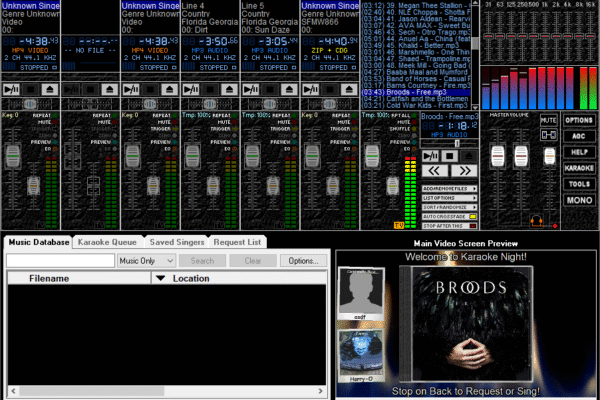In-Context Learning: When Machines Learn Like Humans Think
Imagine a detective solving a case not by rereading all past textbooks on crime but by studying a few fresh clues left at the scene. That’s how large language models perform in-context learning—they learn on the fly, adapting to the situation presented before them, without rewriting their internal rules. Unlike traditional learning that chisels new knowledge into stone, this kind of learning is like shaping sand—fluid, temporary, and context-aware.
In-context learning represents one of the most fascinating capabilities of modern language models: the ability to understand patterns, infer logic, and adapt responses purely from examples given in the prompt. There’s no retraining, no adjustment to model weights—just reasoning in motion.
The Theatre of Thought: How Context Becomes the Stage
Think of a large language model as an actor stepping onto a stage. The script it receives—the prompt—isn’t the entire play, but just the current scene. The actor must infer the tone, motivation, and backstory from those few lines and perform convincingly. Similarly, in-context learning relies on cues and examples embedded within the prompt to determine how to behave.
When you give a model a few examples—say, translating sentences or classifying reviews—it doesn’t “learn” in the traditional sense. Instead, it recognises patterns in context and performs the task as though it had been trained specifically for it. This act of pattern-based reasoning transforms the prompt into a living stage, where every word serves as a prop and every example as a rehearsal note. For learners exploring cutting-edge concepts through a Gen AI certification in Pune, understanding this analogy bridges theory with practical insight into how AI mimics human improvisation.
The Power of Implicit Memory
Humans don’t always need to memorise every rule to act intelligently. When you learn to drive a new car, you don’t start from scratch—you transfer understanding from prior experience. In-context learning works much the same way. Large language models hold an immense reservoir of latent knowledge. When given a few examples, they activate relevant patterns within that knowledge, creating an illusion of learning anew.
This implicit memory allows the model to adapt to diverse tasks—summarising a legal document one moment and drafting poetry the next—without ever modifying its core structure. It’s like a polymath switching effortlessly between languages, guided not by new lessons but by contextual clues. The elegance of this design lies in efficiency; the model remains static, yet its intelligence appears dynamic.
The Mechanics Beneath the Magic
Behind the curtain of this magic lies mathematics. Transformer architectures, which power most large language models, rely heavily on attention mechanisms. These mechanisms weigh the importance of each word relative to others in the prompt, identifying which details matter most.
In-context learning emerges as a by-product of this structure. The model treats each new example not as a memory to store but as a relationship to evaluate. The weights of the network remain frozen, yet through attention, the system simulates understanding and pattern recognition. It’s like reading a recipe: you don’t need to rewrite your entire cookbook to bake something new—you focus on the current set of instructions. This dynamic responsiveness is what makes these models astonishingly versatile.
When Machines Begin to “Think” Contextually
There’s something profoundly human about in-context learning. It mirrors how we infer, imitate, and generalise without explicit teaching. A child who watches a few chess moves doesn’t need a manual to mimic strategy; pattern recognition kicks in instinctively. Similarly, a model exposed to a few examples begins to “understand” intent, tone, and format.
This contextual understanding transforms AI from a static knowledge vault into an adaptive collaborator. Writers, coders, and researchers increasingly rely on this ability to generate tailored responses without retraining models for every niche problem. For those undertaking a Gen AI certification in Pune, mastering how prompts guide context becomes an essential skill—an intersection of language design, logic, and creativity.
Challenges and Philosophical Reflections
Yet, with this brilliance comes ambiguity. Does the model truly understand context, or is it merely reflecting probabilities? In-context learning blurs the boundary between reasoning and mimicry. Because there’s no internal update, the model’s “knowledge” vanishes once the session ends—like footprints washed away by the tide.
This raises fascinating questions: Is temporary learning still learning? Are machines thinking, or simply simulating thought so convincingly that the difference ceases to matter? These debates push the field beyond engineering into philosophy, forcing us to reconsider what “learning” truly means in artificial systems.
The Future of Learning Without Learning
In-context learning points toward a future where AI models behave less like databases and more like improvisers. Instead of rigid retraining cycles, they’ll adapt instantly to context—reading the room, so to speak. Imagine conversational agents that tailor communication styles dynamically or analytical systems that interpret raw business data through example-based reasoning.
As this paradigm matures, the boundary between pre-training and real-time reasoning will continue to dissolve. The goal is not to make machines omniscient, but contextually intelligent—able to discern relevance and act accordingly. Much like a seasoned professional who can adapt presentations for clients across industries, future AI systems will pivot smoothly between tasks with human-like intuition.
Conclusion
In-context learning is the quiet revolution within the broader story of generative AI. It’s not about rewriting the neural brain but about reading the world better—every prompt, every clue, every example. Like a jazz musician improvising from a few notes, large language models learn to harmonise with whatever context they encounter.
As we continue to explore this frontier, we’re reminded that intelligence—human or artificial—isn’t defined by memory alone but by adaptability. In that sense, in-context learning doesn’t just represent a technical advancement; it captures the very spirit of learning itself—fluid, responsive, and endlessly creative.


